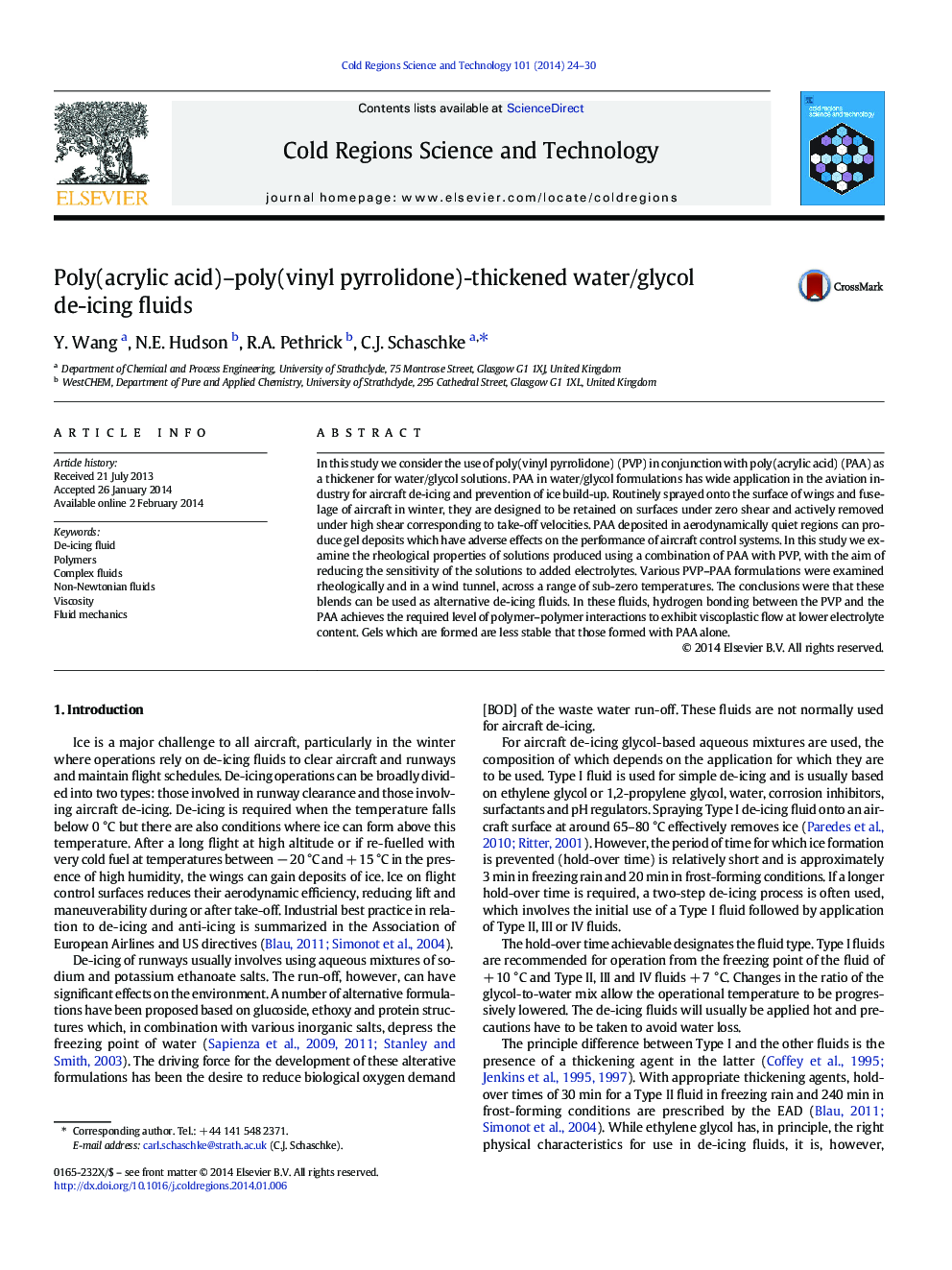| Article ID | Journal | Published Year | Pages | File Type |
|---|---|---|---|---|
| 4675754 | Cold Regions Science and Technology | 2014 | 7 Pages |
•PAA with PVP formulations have reduced electrolyte sensitivity.•Detailed rheological characteristics of PAA solutions with PVP were studied.•Wind tunnel testing was studied across a range of temperatures.•Hydrogen bonding achieves the required level of polymer–polymer interactions.
In this study we consider the use of poly(vinyl pyrrolidone) (PVP) in conjunction with poly(acrylic acid) (PAA) as a thickener for water/glycol solutions. PAA in water/glycol formulations has wide application in the aviation industry for aircraft de-icing and prevention of ice build-up. Routinely sprayed onto the surface of wings and fuselage of aircraft in winter, they are designed to be retained on surfaces under zero shear and actively removed under high shear corresponding to take-off velocities. PAA deposited in aerodynamically quiet regions can produce gel deposits which have adverse effects on the performance of aircraft control systems. In this study we examine the rheological properties of solutions produced using a combination of PAA with PVP, with the aim of reducing the sensitivity of the solutions to added electrolytes. Various PVP–PAA formulations were examined rheologically and in a wind tunnel, across a range of sub-zero temperatures. The conclusions were that these blends can be used as alternative de-icing fluids. In these fluids, hydrogen bonding between the PVP and the PAA achieves the required level of polymer–polymer interactions to exhibit viscoplastic flow at lower electrolyte content. Gels which are formed are less stable that those formed with PAA alone.
